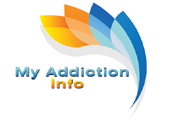
There are more than 115 deaths reported daily from opioid overdoses. The abuse of and addiction to opioids has become a national crisis that affects economic and social welfare as well as public health. The Centers for Disease Control and Prevention estimate that there is a $78.5 billion economic burden on the nation every year from the misuse of prescription opioids.
What Is the Opioid Epidemic?
Pharmaceutical companies assured the medical profession that patients wouldn’t be addicted to pain-killing opioids that were prescribed. For that reason, healthcare providers started prescribing the painkillers more freely. This led to the abuse and misuse of the medication, then it became obvious that they were indeed addictive.
During 2015 alone, more than 33,000 people died in the United States from opioid overdoses. That number includes those who took illicitly manufactured fentanyl, prescription opioids, and heroin. While there are new laws in place regarding prescribing and dispersing opioids, the epidemic is still running rampant with people obtaining the drugs illegally and with powerful synthetic variations on the market.
Here are 8 things that you need to know about the opioid crisis America is facing:
- Misuse of opioids – Anywhere from 21 percent to 29 percent of individuals who are prescribed opioids because of chronic pain will misuse them at one time or another.
- Opioid use disorder is common – Between 8 percent and 12 percent of individuals prescribed opioids will develop an opioid use disorder. In 2014, 15 million people in America, ages 12 and up, reported that they had used prescription drugs improperly during the past year.
- Transitioning to other drugs – Anywhere from 4 percent to 6 percent of those who misuse their prescribed opioids will make the switch to heroin, which is a dangerous illicit drug. Many users switch to intravenous drug use, which has other risks and increases the chances of overdose.
- It starts with opioids – Research shows that about 80 percent of those who use heroin had misused prescription opioid pain medications first. While many individuals can benefit from the benefits of opioids to manage their pain, their tolerance builds after repetitive use, making it difficult to maintain a source for the drugs. They will then turn to the black market to find more drugs and will even switch to cheaper, more dangerous substitutes. The Substance Abuse and Mental Health Services conducted a 2014 survey that revealed 12.7% of those who use illicit drugs started by using prescription painkillers.
- Increase in the number of opioid overdoses – Between July 2016 and September 2017 the number of overdoses from opioids increased by 30 percent in 52 different areas spread across 45 states.
- Opioid overdoses in the Midwest – The Midwestern region of the U.S. saw a 70 percent increase in opioid overdoses from July 2016 to September 2017.
- There are warning signs, so be alert. Changing dosages on your own, noticing relatives run out of a prescription early, noticing changes in behaviors and friends, increased secrecy, frequency of borrowing money, and changes in work and school performance.
- There is collateral damage from the opioid epidemic. Other negative outcomes include falls that lead to injuries. Some switch to intravenous drug use, which increases the chances of serious infections, such as hepatitis or HIV.
Stay Alert and Seek Treatment
If you are abusing opioids or have reason to suspect a loved one is abusing painkillers or suffers from an addiction, seek help. There are countless opioid treatment centers throughout the country. There are also various programs available to meet the needs of the different patients. There are both inpatient and outpatient programs.
When choosing a treatment program, take the time to ask questions. Express any concerns. Learn about the program options and learn about the success rates. The opioid epidemic needs to be properly addressed, so the problem can be resolved before the condition worsens and before collateral damage results. When left untreated, opioid abuse and addiction can shatter lives and families.
Health insurance plans will pay toward addiction treatment. If you are not insured, there are other options available, such as direct pay, grants or scholarships, and payment plans. You do have options, so take the time to learn about the options and your choices, so you can make the best decision for your specific situation.
There are new laws and guidelines in place regarding the prescribing of opioids, which is designed to target the opioid epidemic and to help reduce future problems regarding the abuse and addiction of opioids.

